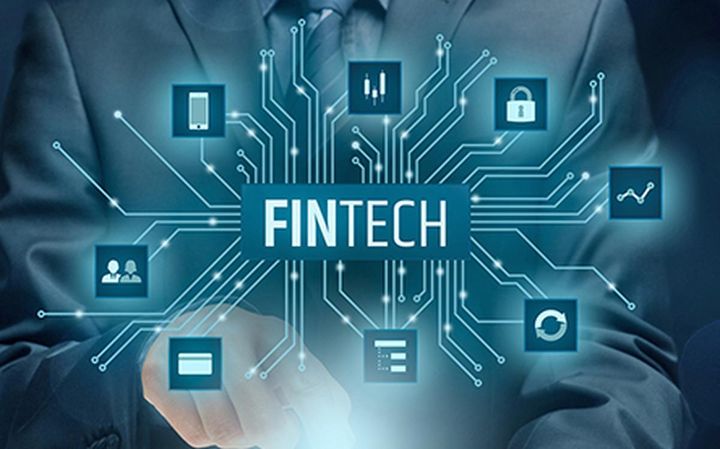Usage of Technology in the Financial Industry
The ongoing tech boom revealed a significant effect on the role of financial institutions opening up new horizons for advanced and innovation-friendly companies such as fintech banks. These companies have leveraged financial technology to change the rules of the industry.

The ongoing tech boom revealed a significant effect on the role of financial institutions opening up new horizons for advanced and innovation-friendly companies such as fintech banks. These companies have leveraged financial technology to change the rules of the industry.
Finding new business opportunities through technology:
One of the main benefits that financial technology has brought to many industries is the opportunity to find new and profitable businesses. Digitalisation has helped companies reach new markets previously uncovered by traditional institutions. For instance, neobanks have been using technology to offer financial services in a completely digital environment. These new types of banks can win customers that traditional institutions can't, such as people living in rural areas that cannot personally attend a bank branch or people that prefer digital services, as is the case with the new generation of digital natives.
The investment and credit scoring industries are other examples where technology is providing new business opportunities. For instance, through automated algorithms, Robo-advisor companies can provide financial advice at a low cost and with little human intervention. Therefore, more people can take a more affordable first approach to investments without needing deep knowledge in the field or having to hire an expert.
In the case of credit scoring, alternative data and artificial intelligence have helped lenders to expand their businesses by reaching untapped markets with a lower risk. The key to transforming non-banking customers into profitable customers is through behavioural insights related to the willingness to pay back a loan, such as loyalty, consistency of behaviour and ethical standards. Fintech credolab, for instance, uses anonymous smartphone metadata to provide meaningful insights into borrowers' behaviour. For example, prompt bill payers are typically more reliable than those who hold off. This way, credolab can predict user behaviour and intention to pay back by studying patterns of daily mobile usage. By applying scoring algorithms to anonymous metadata, lenders can obtain robust personalised models of human behaviour in social, spatial, and sequential contexts. This will enable them to add new trustworthy clients to their portfolio, despite not having a complete traditional credit history.
A Consumer-centric approach:
Brands need to have a consumer-centric approach to gain and retain customers. According to Appsflyer, almost 1 in every 2 apps installed are uninstalled within 30 days. That is why keeping relevant to customer needs and providing a seamless user experience is key to success.
For instance, understanding how users feel about technology is one central way to keep it relevant to them. Designing a digital platform for digital natives is not the same as designing for people with little contact with the online world. That's why alternative data technology could be a great ally for businesses willing to learn more about their tech-savvy clients. Knowing the client's digital skills could make the difference between a rewarding experience and one that causes frustration to users.
Also, artificial intelligence could be to discover more detailed consumer behaviours and lifestyles if marketing is not viewed as the generation of needs but as the discipline responsible for finding and satisfying them. This also helps create better segmentation and build more appropriate customer journeys that provide delightful experiences.
New technologies, such as alternative credit scoring, could help companies obtain real-time information. This not only helps lenders to approve customers in minutes, but also it helps UX managers to make more accurate and faster decisions related to the whole interface. For example, it is possible to detect actions that indicate consumer doubt, dropout, or even data manipulation in a subscription process.
Fraud reduction:
Security is also a key result of financial technology innovation. Fraud is increasingly imperceptible and harmful, which is why a good system is required for protection. A security breach can result in terrible consequences, such as losing many clients' financial health and trust.
Some examples of how technology could prevent fraud are using insights obtained from smartphone and web metadata, such as exposing fraud by shedding light on smartphone behaviours. This includes detecting repeated loan signups using the same device, browser, or IP address or investigating how often applicants alter crucial information like addresses or income, among other discoveries.
In short, with the emergence of fintech, the demand for financial technology is increasing. As a result, fintech has become a key pillar for growth in a changing industry with changing customers. Institutions must be at the forefront of their security systems to ensure their
About Michele Tucci
Michele is the MD of credolab's Americas and its Chief Strategy Officer. Prior to joining credolab in 2018 as Chief Product and Marketing Officer, Michele worked on international consulting assignments, product management, and business development roles with the likes of Capital One, MasterCard, Intesa Sanpaolo Bank, and Telecom Italia Mobile.


